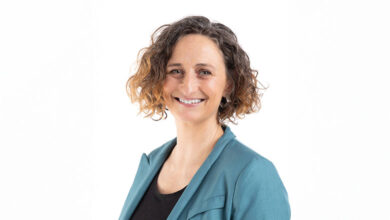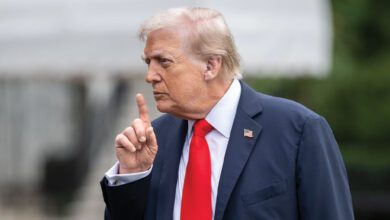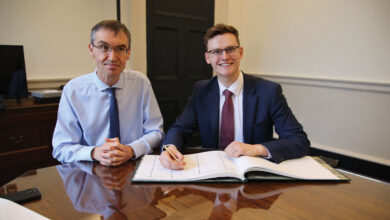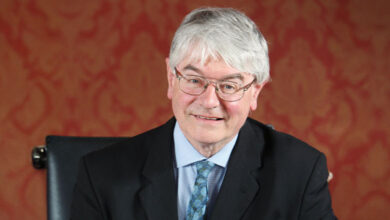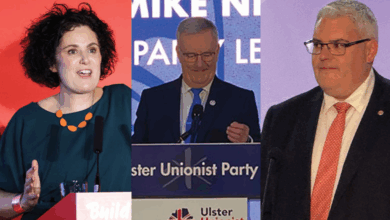Off the Cuffe
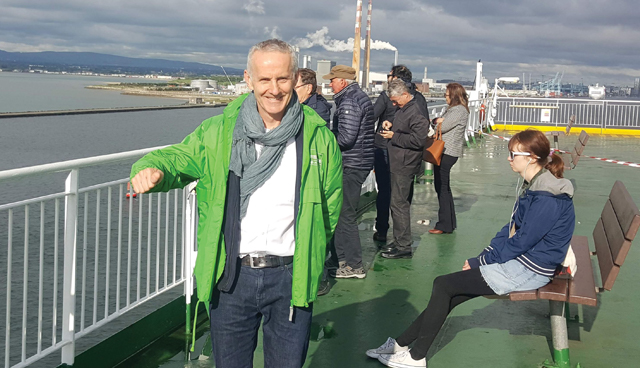
Having held seats in the Dáil, Dublin City Council and now the European Parliament as well as being member of the Green Party since 1982, Ciarán Cuffe is a veteran of green parliamentary politics in Ireland. He talks to Odrán Waldron about the ‘green wave’, the Covid-19 pandemic and the rebuilding potential in the European Green Deal.
“The party grew out of concerns about the environment in the 1970s and early ‘80s,” Cuffe says. “Back then, the concerns that we highlighted were around the air pollution threat and the destruction of our heritage. Since then, the priorities have changed, and the party has grown. What’s interesting is that environmental and social concerns are now mainstream. While we still are criticised by the mainstream parties, I see a much greater willingness to engage with the issues that the Greens highlight.”
Having joined the party in its fledgling status in 1982, Cuffe has witnessed and participated in the transformation of the party multiple times, from its first TD to coalition government, the subsequent electoral oblivion of 2011 and its return as a force across the 2019 local and European elections and the 2020 general election. Its success has taken place against a backdrop of ever-increasing vigilance regarding the environment.
“Things we highlighted 30 years ago are now at the heart of the transformation society is trying to make,” he says. “To be more specific, climate change is one of the greatest challenges we’ve faced and in the European context, the Green Deal is an attempt to reduce the EU’s greenhouse gas emissions and at the same time achieve a just transition that provides jobs to those who most need them.”
Europe
Having served as a TD from 2002-2011 and as a Minister of State during that tenure, Cuffe could have been expected to hold his mettle for the general election and return to Leinster House, but having served as a Dublin City Councillor since 2014, he ran in both the locals and the European election, winning a seat in both and becoming the Green Party’s first MEP since 2004 along with Grace O’Sullivan. Owing to dual mandate rules, Cuffe’s council seat was co-opted, but the question remains, for a man with so many options, why Europe?
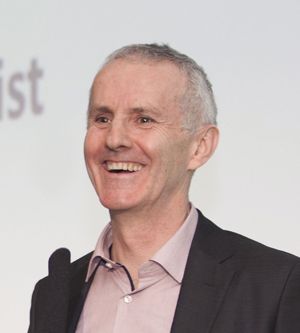 “The policies enacted in Europe are crucial to the changes that we make in Ireland,” he explains. “Prior to being elected to the European Parliament, I was a lecturer at Technological University Dublin. I ran a master’s in urban regeneration and the issues that we tackle are so influenced by Europe, be it planning law, environmental protection, social protection, the big decisions are often made in Brussels. For me, it seemed like a logical progression to effect change on that stage.”
“The policies enacted in Europe are crucial to the changes that we make in Ireland,” he explains. “Prior to being elected to the European Parliament, I was a lecturer at Technological University Dublin. I ran a master’s in urban regeneration and the issues that we tackle are so influenced by Europe, be it planning law, environmental protection, social protection, the big decisions are often made in Brussels. For me, it seemed like a logical progression to effect change on that stage.”
Cuffe has been attempting to cut his carbon footprint while travelling from Dublin to Brussels and back again for his work. “One of the ways I do that is often spending every weekend in Brussels so I’m not flying over and back,” he says.
“I think this is a watershed moment; there’s a lot of anti-EU sentiment in Italy, as there was in Greece a few years ago. Ursula von der Leyen and her colleagues in the commission will have to show their resolve at providing solidarity and a helping hand to the countries that have been hardest hit.”
“On every fourth journey, I try to go by ferry and train, taking the slow travel route, which reduces my footprint by about a quarter and I think if I can show how I can carry out my work effectively with a 25 per cent drop, then it makes it a bit easier to talk about the changes that we as a society have to make over the coming years. I enjoy that journey, it’s a chance to clear the head and get a bit of reading or writing done.”
Recovery
Cuffe’s first year in Europe has been a remarkable one, first with the publication of the European Green Deal in December 2019 and then with the outbreak of the coronavirus pandemic. Criticism of the deal existed before the pandemic, with many claiming that the much-vaunted €1 trillion figure involved was a simple reshuffling of funds and that only the €7.5 billion just transition fund is new funding. In this new socio-economic landscape, shaped by the pandemic and the need for economic recovery afterwards, Cuffe sees both opportunity and danger.
“There are different figures floating around at the moment and there have been some ambitious maths involved in calculating the final figure in what is needed in the multi-annual financial framework and other instruments that are available to us. It is a real challenge, in particular with the Covid-19 pandemic, to forge agreement between the northern states and the southern states on what is needed. The EU states that are more focused on fiscal constraints would argue that there should not be a giveaway to southern or eastern countries. However, some of the Mediterranean and eastern states are arguing that they have been hard hit and their economies were in difficulty beforehand and they need all the help they can get.
“I think this is a watershed moment; there’s a lot of anti-EU sentiment in Italy, as there was in Greece a few years ago. Ursula von der Leyen and her colleagues in the commission will have to show their resolve at providing solidarity and a helping hand to the countries that have been hardest hit. This is a huge challenge and even before the pandemic, the cracks were apparent in Project Europe but the pandemic has brought them to the surface and it is a Herculean task for the commission to forge a common purpose that will bring the EU through the rocky months that lie ahead.”
Cuffe is keen to stress that the argument must move on from the nature of payments, arguing that there is not “a huge difference” between loans and grants as the financial markets currently stand given the historically low interest rates currently in operation. “I think if the debate moves on to the actual payments that will be required over the next five to 20 years to stimulate the economy, we can get away from this polarisation of pigeonholing nations into their fiscal outlook,” he says.
“The lesson we’ve learned from the global financial crisis of 10 years ago is that too much austerity is counterproductive, and stimulus can be a better approach in the short term. That’s why people are looking back to the New Deal in the 1930s United States, they’re looking at the Marshall Plan that helped Europe rebuild after World War II. There are historical precedents for recovering from a crisis in a different way than we did 10 years ago.”
For Cuffe, who is a member of the European Parliament’s Energy and Transport committees, the hope that things can be done differently this time around lies in the European Green Deal. “The promise of the European Green Deal can result in cleaner air, safer communities and new jobs in the sunrise industries,” he says. “I would focus on four key areas: energy, construction, transport and agriculture.
“In energy, the investment in renewables has been extraordinary and the reduction in price has been transformative. We need demand management for activities and high power uses that can shift use depending on availability and we need to invest in long distance transmission. People talk about the European Super Grid; we’re already seeing an interconnector in France moving towards construction and we will need similar projects around Europe to ensure clean energy gets to where it’s needed most. In transport, the shift to clean mobility needs investment in rail, public transport, walking and cycling. To date, the EU’s efforts have been focused on the trans-European networks, many of which are roads. We need stronger maritime corridors, stronger investment in rail and public transport.
“In construction, we need a massive investment for renovation of our existing building stock. I’ve just completed a draft of a report for the Energy Committee of the European Parliament on the renovation wave. In a nutshell we’re saying that the EU needs to spend about €75 billion a year to help us on the path to zero carbon from our building stock by 2050. That will offer huge opportunities to tackle energy poverty and create employment in areas that are undergoing the transition from polluting industries to a low carbon future.
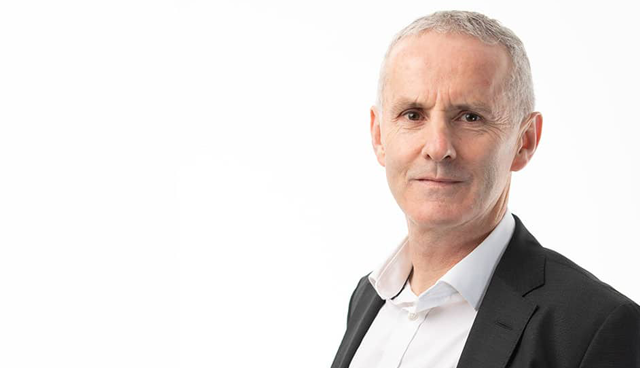
“The Greens have to reach beyond our traditional base and cultivate new voters in areas not regarded as Green strongholds. We need to form new alliances with industry, with agriculture and with the people who regard the green agenda as an opportunity, not a threat.”
“In agriculture, which is often contentious in the Irish context, there is the possibility of reforming the Common Agricultural Programme. This is a real opportunity to move away from intensive agriculture that favours multinationals and move to a low carbon future where funding is directed more at communities and farm families instead.”
Green wave
Turning away from Europe and to the revived fortunes of the Green Party, who now have more elected officials than ever, Cuffe’s experience comes to the fore. “I’ve been around long enough to see perhaps three green waves build and break. For any small party, your existence and support are precarious at the best of times. Looking to the future, the Greens have to reach beyond our traditional base and cultivate new voters in areas not regarded as Green strongholds. We need to form new alliances with industry, with agriculture and with the people who regard the green agenda as an opportunity, not a threat.”
Cuffe says that “with my 12 colleagues in the Dáil and two in the Seanad, we have to show how the green agenda offers opportunities” and that “there is still a lot of understanding needed to see what the prospects of Greens in government can deliver for every place in Ireland”.
“The Greens have always been driven by an agenda of change and transformation of society. What I’ve learned over the last almost 40 years as a member is that change happens incrementally and slowly. That can be a source of huge frustration for my colleagues but often incremental change is all you can get and you have to simply focus on changes that over time build up to the transformative change that we are all looking for,” he concludes.

